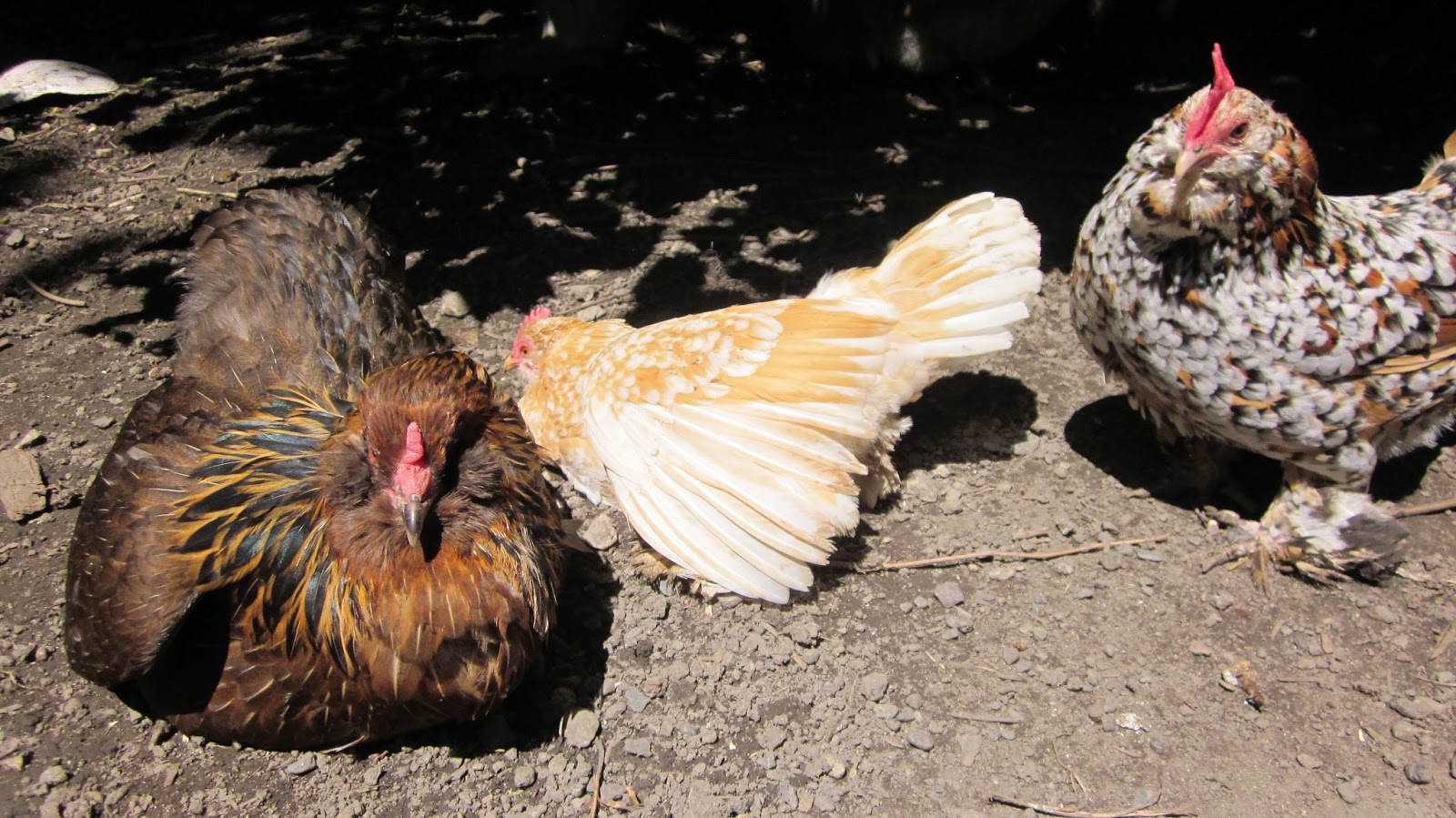Winter
came late to Boston this year, throwing chickens' molting schedules off all
over the place. And boy did it show UP by the time it finally arrived!
Though by now that's not really news.
What IS news that we had just a single day with above-freezing temperatures this past weekend, and
suddenly all that water weight and ice is shifting around and wreaking
ALL
kinds
of
havoc
everywhere.
"But," you might say, "what does this mean for my girls?"
In a word? Flooding.
Not in the coop, necessarily, but in your igloo-encased run.
Assuming you've already dealt with any structural issues, your biggest challenge in the next month or two (assuming we ever get to put our winter jackets away!) is going to be that all of that melting snow and ice will have nowhere to go but into that nice, open area that you so thoughtfully cleared out for your girls.
SO... first
of all, if you haven't already cleared the snow and ice off the top of your coop and run I recommend doing so. And, if you can, toss it far, far away.
Second, dig a moat! Your girls are all princesses, and every princess castle deserves a proper moat. You could even build them a drawbridge. The point is that you want to dig out some other space for that water to go that is NOT towards the inside of the snow-bowl that is currently playing the part of your run.
Third, cry me a river! Or rather, dig one... or two or three. Give your moat at least one good drainage path - preferably downhill and definitely away from any buildings so you don't just make your run-flooding issue into a basement-flooding issue.
Finally, raise 'em up! If at all possible, take this opportunity to add as much sand and additional dirt to your run, ideally to raise the ground level in the run so it's higher than the surrounding area. The sand will also help with drainage for whatever water does get in the run, and is a fantastic addition to your run flooring anyway (princess chickens love dustbathing in sandy soil!).
(Note: In this instance, I DO NOT recommend trying to supplement your run floor with bedding from the coop, straw, hay, leaves, or any similar plant-based "bedding". Most of these are used because they are really great at absorbing water, and that is the opposite of the drainage you're going for here. Most bedding is also very susceptible to mold and rot if it stays wet for an extended period of time, which it likely will in this situation, and that can cause a whole other mess of issues for your flock.)
(Note: In this instance, I DO NOT recommend trying to supplement your run floor with bedding from the coop, straw, hay, leaves, or any similar plant-based "bedding". Most of these are used because they are really great at absorbing water, and that is the opposite of the drainage you're going for here. Most bedding is also very susceptible to mold and rot if it stays wet for an extended period of time, which it likely will in this situation, and that can cause a whole other mess of issues for your flock.)
In summary, if the floor of your run drains fairly well and is higher than your moat, and the moat is higher than your drainage river, and the drainage river has somewhere downhill to drain towards, then you have an excellent chance of keeping your chicky princessess' royal feet as dry as possible.
And now, with the Promise of Impending Spring, I bring you...
Awkward chicks sunbathing. :D
(All photos taken by and copyright of Khrysti Smyth and Yardbirds Backyard Chickens. If you would like to use any of them, please contact me for permission! Protip: If you ask me, I'll probably say yes.)



















